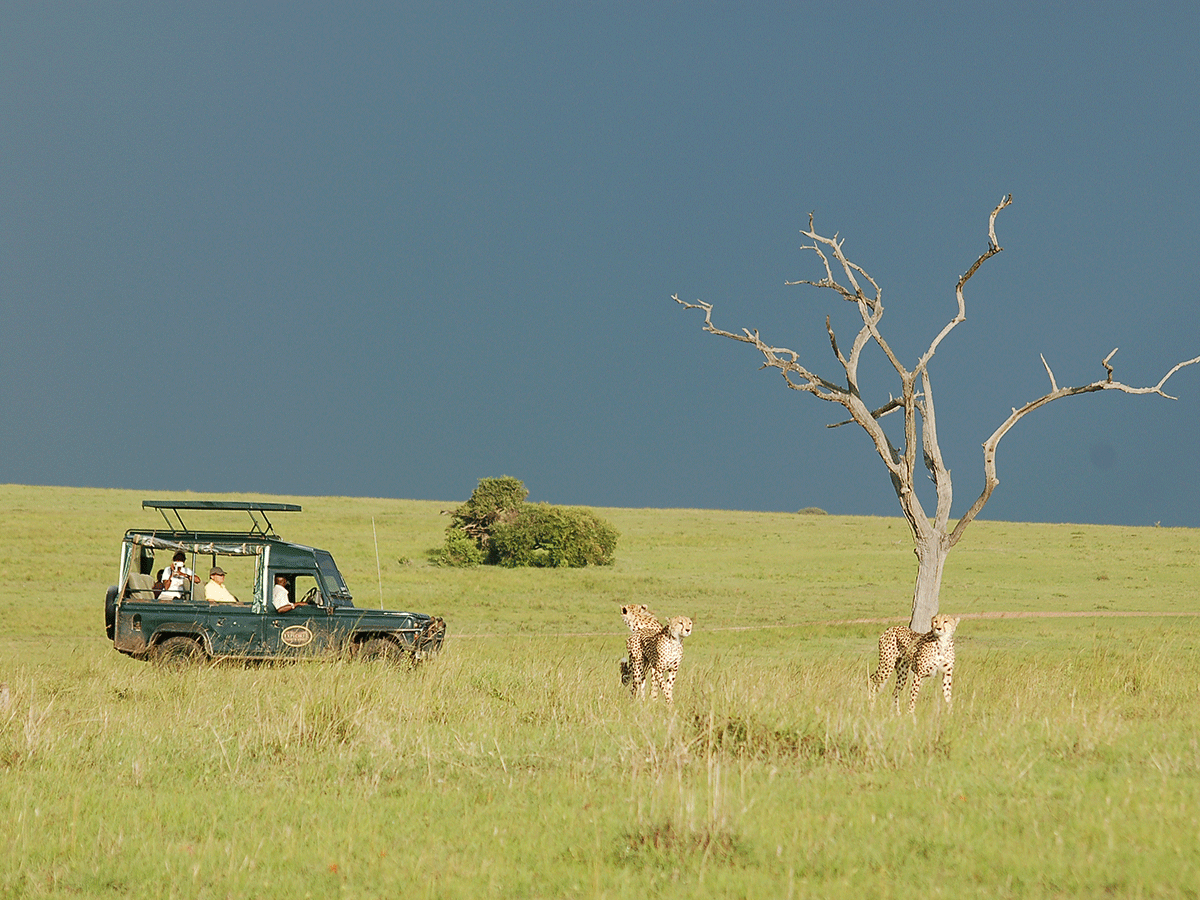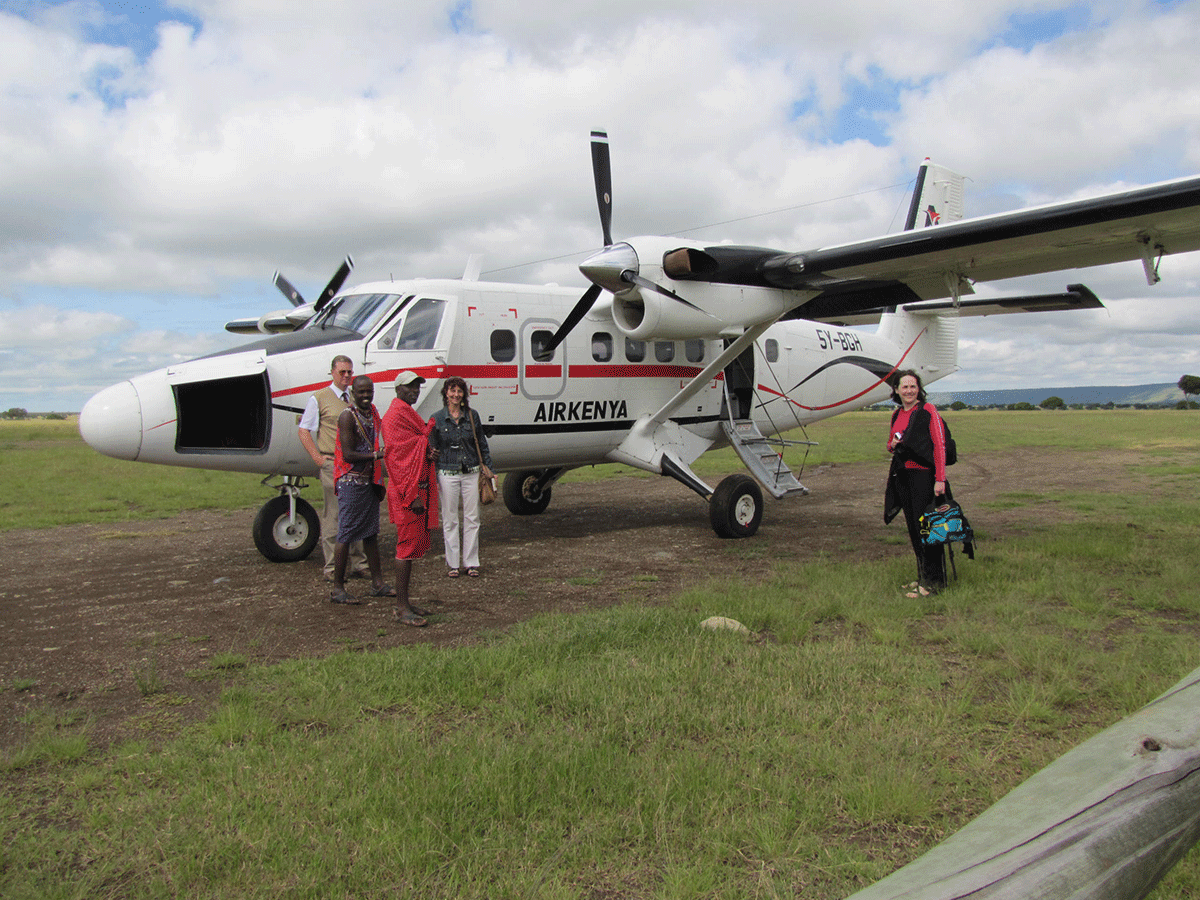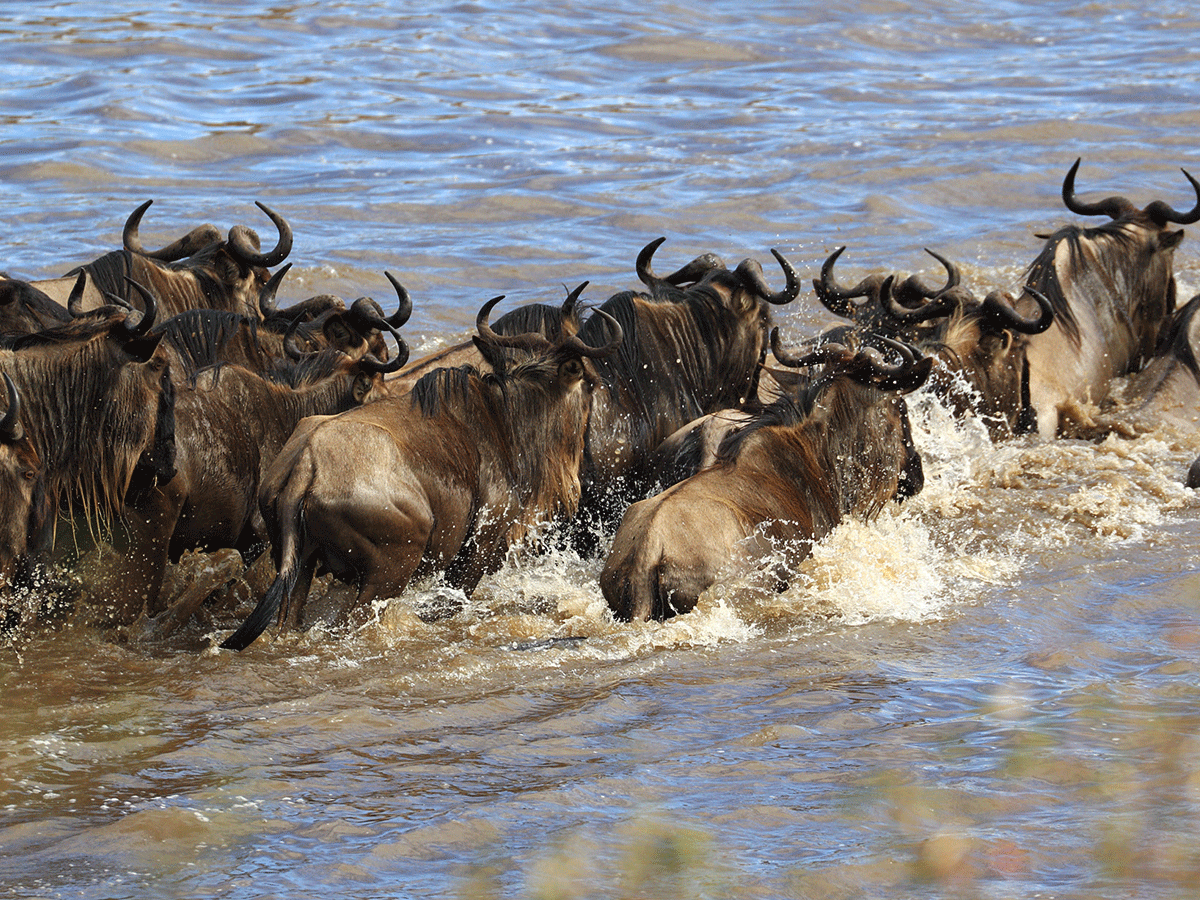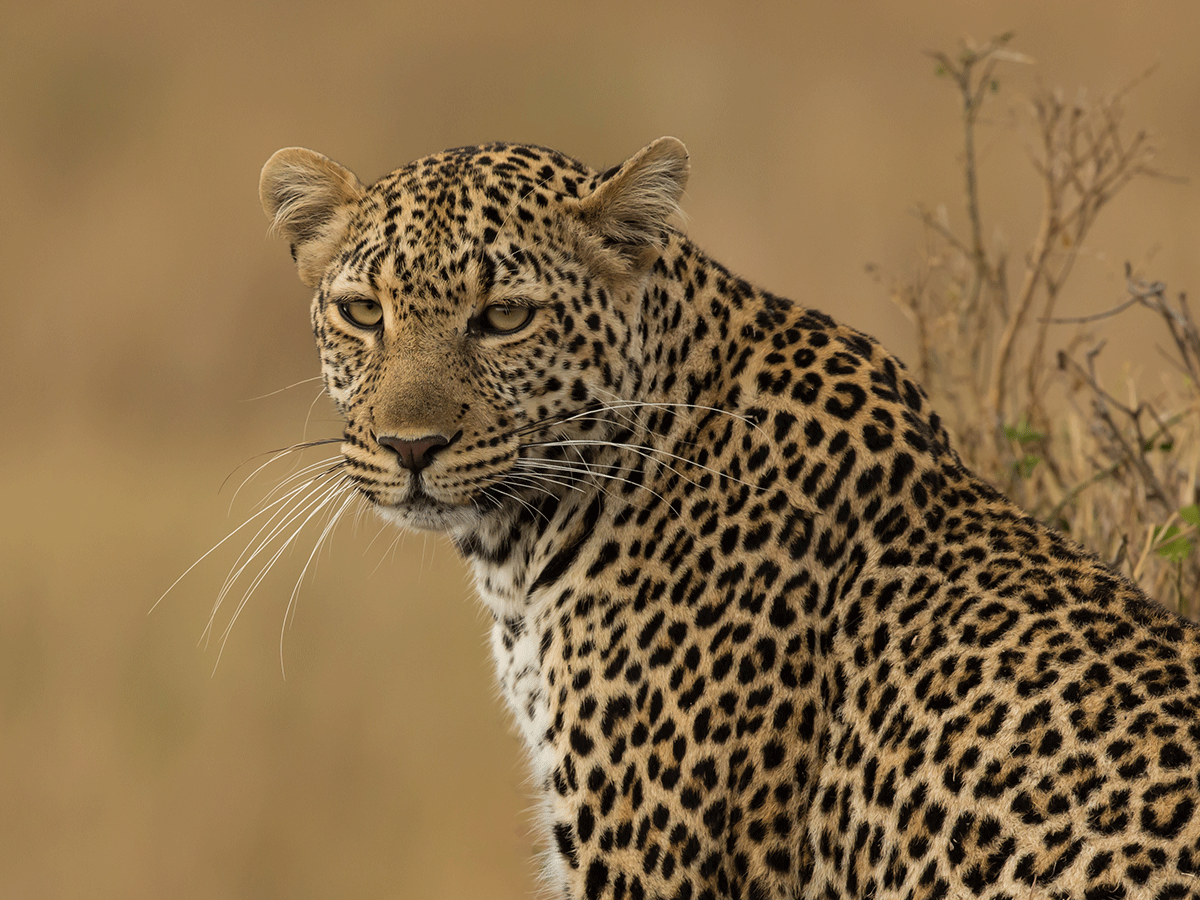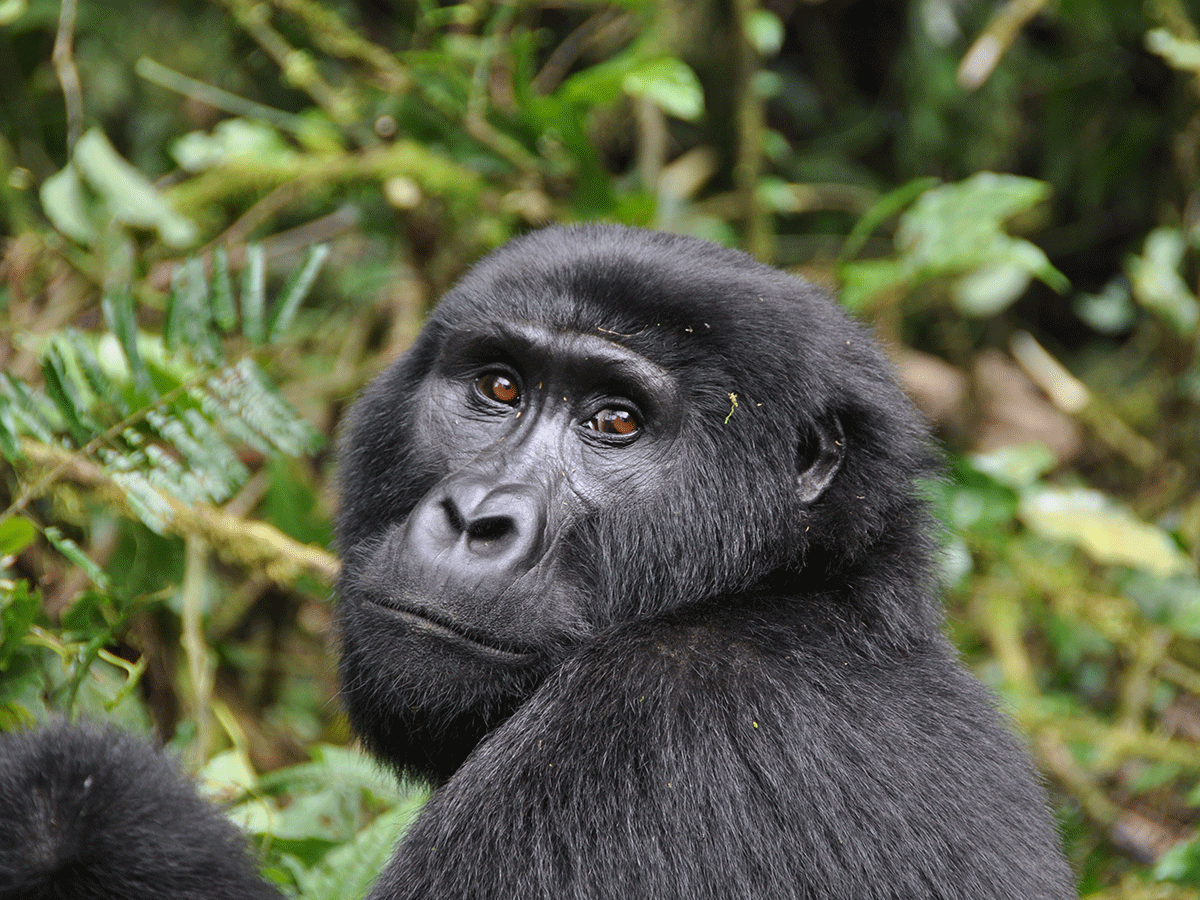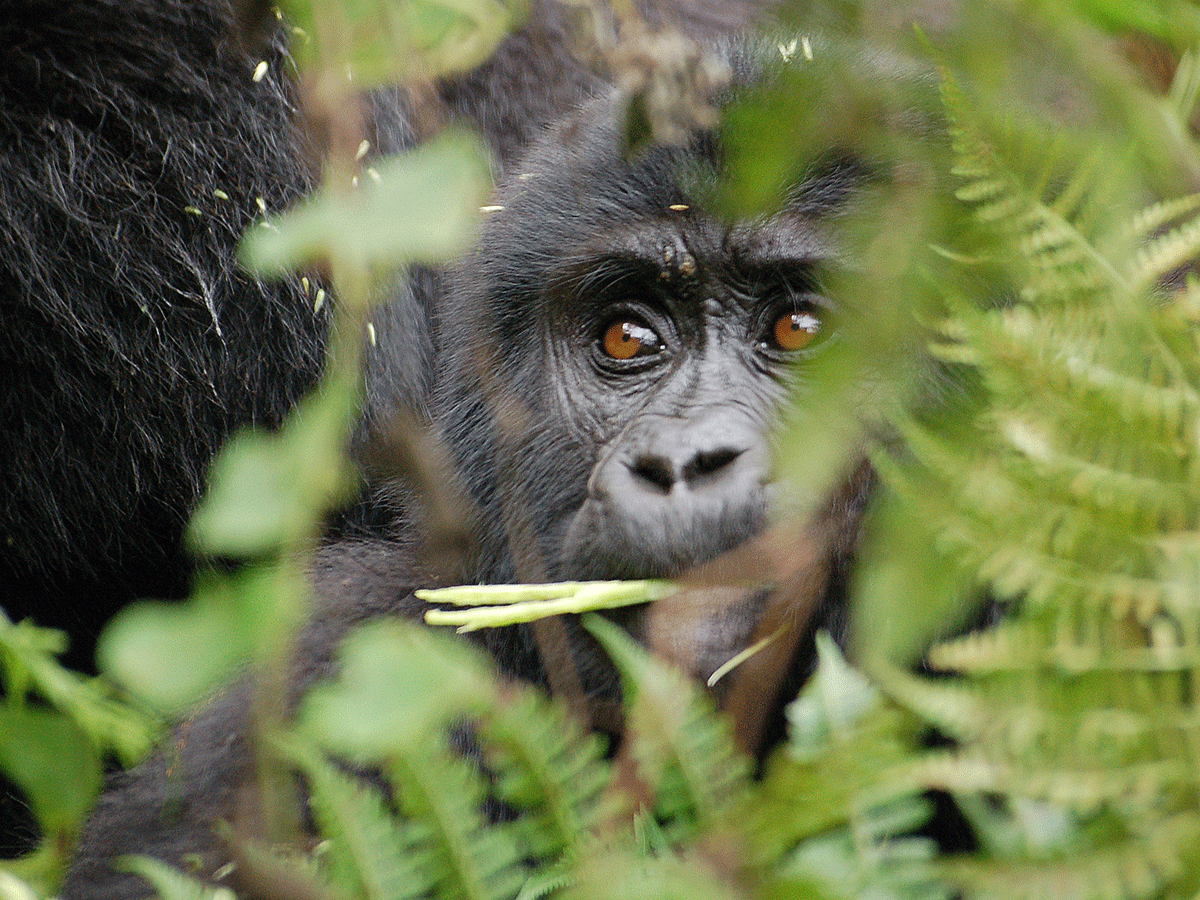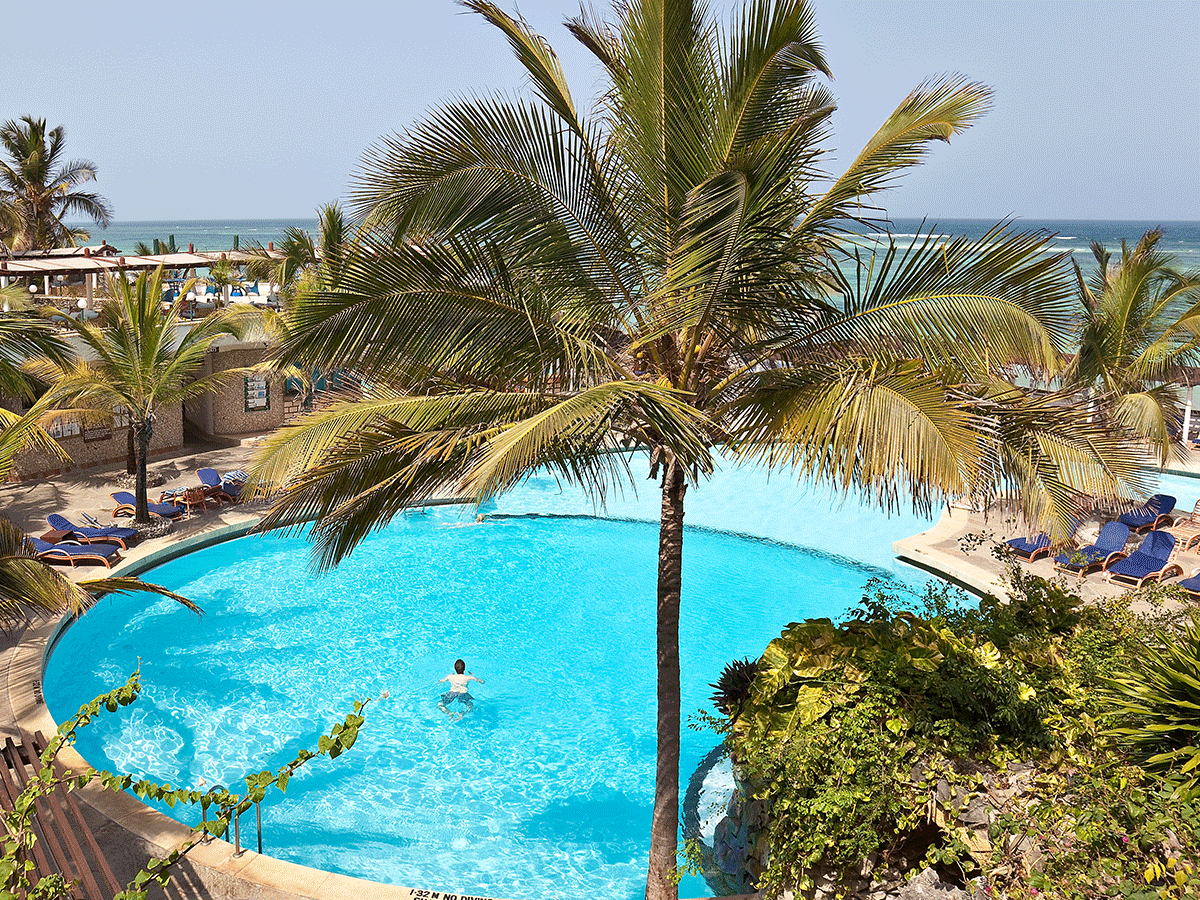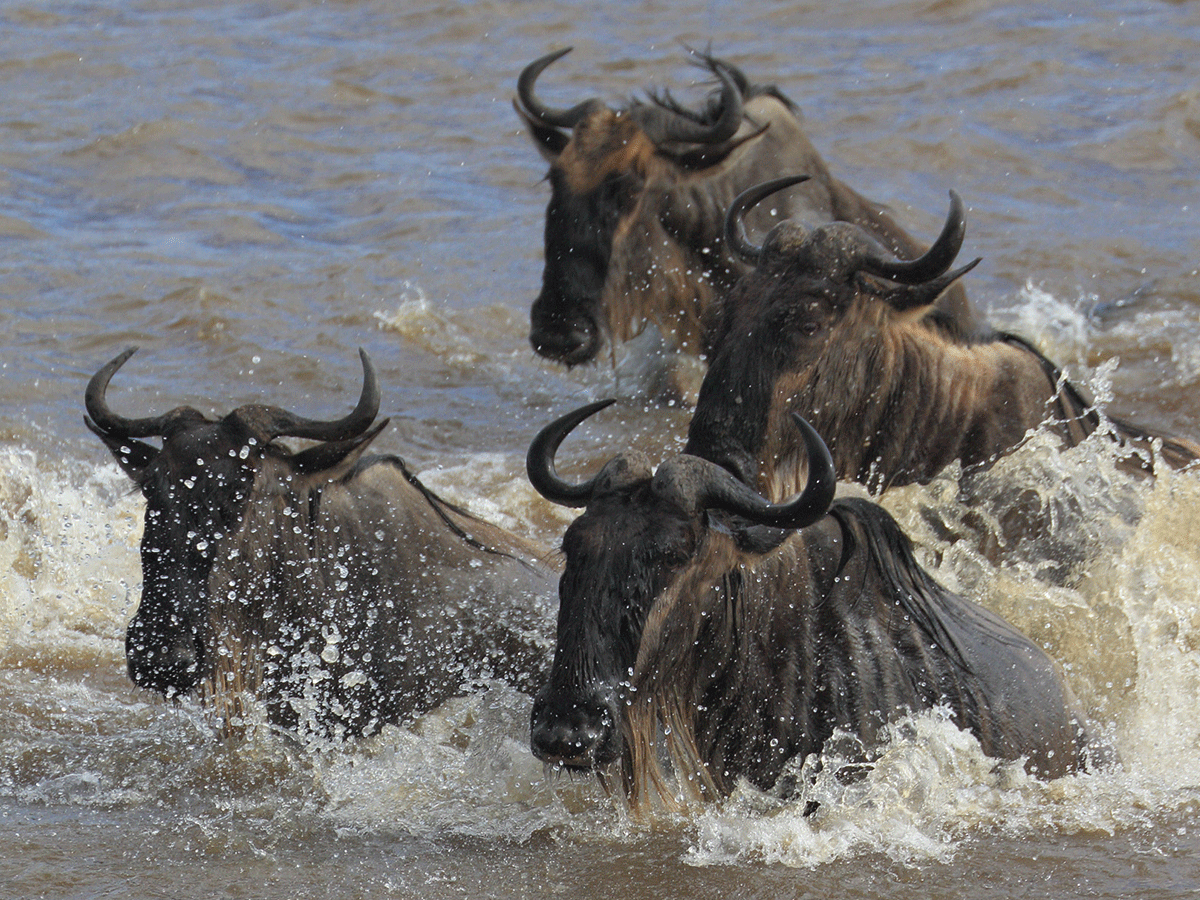Masai Mara Wildebeest Migration Safari Kenya
Home » Best African Safari Tours & Holidays » Masai Mara Wildebeest Migration Safari Kenya
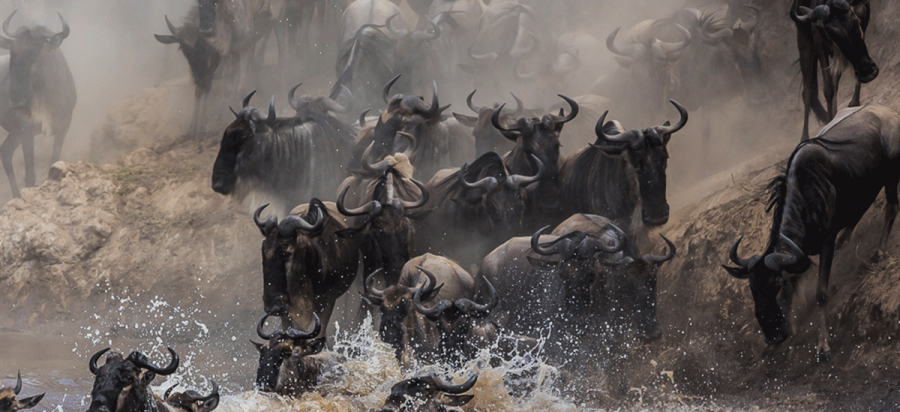
Masai Mara Wildebeest Migration Safari Kenya
The Masai Mara in Kenya is nature’s epic masterpiece, perhaps there’s no better place to view the dramatic river crossings during the great migration. The Mara Triangle has some of the highest concentrations of wildlife you will encounter during your Africa trip. This quiet corner of the Masai Mara and gateway from the Serengeti to the Masai Mara is a remote and less crowded place to be for an authentic safari experience.
The area known as The Mara Triangle spans 510 square kilometers, approximately one-third of the entire Masai mara national reserve. In the past, this region was the scene of widespread poaching leading to the death of thousands of animals each year. In 2000 a group of local leaders banded together to make a difference to promote the conservation of the Mara Triangle. The collaboration of these leaders led to the establishment of the non-profit Mara Conservancy. It was the first step towards a ground-breaking partnership between the public and private sector, between conservation professionals and the local Maasai community, to successfully conserve and manage one of the most animal-rich areas of the world.
This part of the Masai Mara lies between the mighty Mara River and the Western Oloololo Escarpment in Southwest Kenya. The Mara Triangle can only be reached through the Oloololo gate or by way of the New Mara Bridge. Because of its limited access, it’s far less visited and less crowded than the rest of the area.
Wildebeest migration
The great wildebeest migration is an annual circle of movement of over two million animals as they search for greener pastures and water, the migration patterns are heavily and likely to be determined by rains in the Masai Mara and the Serengeti ecosystem.
This movement involves millions of wildebeest, thousands of zebras, gazelles, eland, and predators that follow the migration but they do not cross the Mara River.
What to expect during the Wildebeest Migration
The great migration usually takes place in the area of about 40, 000 square kilometers pretty much defined by the dominant migration routes of the white-bearded wildebeest in what is regarded o as the Masai Mara and Serengeti ecosystem which is divided by the Mara River so being at the right time at the right place is all that it takes to witness the River crossing as the Wildebeest do not have defined crossing points, the crossing points change time to time depending on the obstacles faced as the wildebeest trek from southern Serengeti through the western corridor crossing Lakes and Rivers on their way to the greatest obstacle of the entire migration the Mara River which usually floods and also with huge crocodiles that wait for the Migrating herds during the migration so while planning your Masai mara wildebeest you have to choose the best places to stay in order to have higher chances to see the River crossing.
See our popular Masai Mara Wildebeest Migration Safari Kenya tours
Wildlife during the annual Migration
Over 1.6 million wildebeest will lead the way as the rains approach in the Serengeti in late October or November and this is accompanied by 400,000 Thomson’s gazelle, 300,000 Zebra, and 12,000 Eland. These are the main migrators and they cross the ranges of over a quarter of a million other resident herbivores and, of course, carnivores. The lions, hyenas, leopards, cheetahs, and lesser predators will always follow the migration and this will be evidential as more numbers of predators are seen following the wildebeest migration at the beginning of the circle.
Why does the great wildebeest migration take place?
In reality, there is no spectacle on earth as the one of the wildebeest migration which seems to neither start nor finish in their endless search for food and water, as they migrate across the Serengeti- Masai Mara ecosystem in a relentless sequence of life and death which occurs annually.
The only beginning is the calving season which sees new members join the struggle in what is termed action-packed in February at the Ndutu plains as 75000 calves are born before the journey starts again in May-June with the rutting season as the wildebeest prepare to cross the dangerous Mara River which is filled with big Nile crocodiles and the end is the death this was evidenced by the East African author and photographer Jonathan Scott, who has spent the better part of the last 30 years witnessing the events of the great migration in the Serengeti and Masai-Mara ecosystem.
The prediction of where, when, and how the wildebeest migration works is a very difficult question that many people answer in their own knowledge but the most important part to know about the great migration is Probably an element of the environment to its inhabitants, whether which is in the cycle of four seasons per year undoubtedly has the defining influence on the migration. The seasons are reasonably defined: the ‘short dry season is typically December to February/March; the long rains fall over a six week period from March through April and into May; and the long dry season is from June to September, with the two-week ‘short rains’ falling any time from October into November. There are, however, no guarantees about these timings.
The wildebeest calving season
The Great wildebeest migration build-up to the annual wildebeest migration usually starts in January and February, when the wildebeest cows drop their young in the same time or rate that sees some 7000 to 8000 calves are born every day and within two to three weeks after eight and a half months after the rutting season. The calving season occurs in the short-grass plains of southern Serengeti and spreads over to the lower northern slopes of the Ndutu area in Ngorongoro Crater highlands and are scattered around Olduvai Gorge. Here, at the ‘cradle of mankind,’ many notable fossils are found to have been discovered.
The annual calving season is really action-packed in the Serengeti as it provides a feast for predators. A safari across the plains will see clients count literally hundreds of hyenas and dozens of lions scattered around the huge herds of the wildebeest, It may seem like the wildebeest are doing the predators favors by dropping their young ones all at the same time, but in reality, it is the best way the wildebeest calves survive as many calves are born daily making it difficult for the predators to cause a big impact as it happens at the same time and in a short period, The predators thus have only a limited impact on the population of new-born calves; any calves born outside the peak are far more likely to perish.
You might also like
Life of the wildebeest calves
A newborn wildebeest calves gain coordination faster than any other ungulates and are usually on their feet two to three minutes after birth. It can run with the herd at the age of five minutes and is able to outrun a lioness soon thereafter. Notwithstanding this, many do die within their first year, from predation (although research indicates only about one percent die this way), malnutrition, fatigue or disease causes more impact on the wildebeest calves, Many calves get separated from their mothers when the herds panic (which happens frequently) or cross rivers or lakes in their path. The calves then wander for days looking for mum, bleating and bawling incessantly, on rare occasions they may be lucky to find her, but no wildebeest cow will adopt a strange calf, even if she has lost her own and is lactating at the time. As it weakens, a lost calf becomes an easy victim for any watching predator, from jackal up to hyena and lion.
The start of the wildebeest circle
Towards the end of the short dry season, around March, the short-grass plains of the southernmost Serengeti begin to dry out and the wildebeest begin their journey, heading towards the western woodlands heading towards Seronera area and the western corridor towards the Grumeti River.
From the plains around Olduvai, the herds head west towards the trio of small lakes, Ndutu, Masek, and Lagarja. At this time their biggest need is usually to find water, and these more westerly areas can provide it. Still feeding and fattening on the nutritious short grass the herds scatter widely across the plains, shifting on a whim in response to factors beyond our knowledge. On any given day they’ll be spread out in their tens and hundreds of thousands across the expansive plains west of Ndutu, the next they’ll be gone. By now the first downpours of the long rains will be falling, and the wildebeest will canter across the plains towards the distant thunderstorms, frequently returning a day or two later if the promise did not match the reality.
How do the Wildebeest know which way to go?
There are at least two possible answers, according to behaviorist and ecologist Harvey Croze, co-author of The Great Migration. The wildebeest’s journey is dictated primarily by their response to the weather; they follow the rains and the growth of new grass. And, although there is no scientific proof that this is true, it seems that they, and other animals, react to lightning and thunderstorms in the distance. ‘It would be surprising if even the wildebeest could overlook such prominent portents of change,’ writes Croze.
But it is probably instinctive knowledge, etched into their DNA by hundreds of thousands of years of natural selection, that is the major reason why these ‘clowns of the plains’ know in which direction they must travel. Over the millennia, those wildebeest that went the ‘wrong way would have died (of thirst and starvation) long before they could reproduce, so the wildebeest that lived to produce the future generations were the ones that went the ‘right way.
Wildebeest rutting season
As the rains set in, the herds head north-west past the granite outcrops of the Simba and Moru Koppies and into the woodlands of the hilly country west of Seronera towards Lake Victoria.
This is the time of the annual rut, with half a million cows mated in less than a month as the herds consolidate in the woodlands and on the plains of the Serengeti’s Western Corridor. The peak of the rut seems heavily influenced by the state of the moon, with the full moon in May-June being a good bet for anyone seeking the most action.
Seemingly vicious fighting between dominant or territorial males takes place during the rut, though there is generally little actual violence or serious injury. And in spite of these energetic duels, the males have little say over their choice of mates, for it is the females who do the actual choosing.
The journey to the Mara River through Lakes and Rivers in Serengeti
From the western Serengeti, the herds head north, following the rains (or their effects) into Kenya’s Masai-Mara Game Reserve. On their trek, the wildebeests’ path is cut several times by rivers: in the Serengeti by the Mbalagweti and the Grumeti, and in Kenya by the Mara. For most of the year, these rivers are relatively placid, but they can become violent to currents in response to rainfall in their catchments areas, and then they present major obstacles to the progress of the wildebeest.
The rivers and indeed the few isolated lakes in the south of the Serengeti are terrifying to the wildebeest firstly because of the animals’ fear of the water itself and the creatures it may hide, and secondly because water generally means vegetation and thickets that may conceal predators. Yet the wildebeest have an inherent instinct to trek in a certain direction at any cost – despite their terror. The lakes in the south – Ndutu, Masek, and Lagarja – for example, are little more than a few kilometers long, and could easily be walked around. But natural selection steps in once more: the wildebeest that crossed the lakes in previous generations survived to breed, so the waters pose no fear to their journey; those that did not make it gave any further input to the gene pool.
In his definitive documentary on the migration, The Year of the Wildebeest, filmmaker Alan Root describes how he watched a crossing at Lake Lagarja, were once the main body of the herd had crossed cows that had become separated from their calves turned back to look for them re-entering the water and swimming back. On reaching the other side, still not reunited with their offspring, they turned back once again. This toing and froing went on for seven days until eventually the numbers of arriving wildebeest built up again and the stragglers were forced to move on with the main body of the herd. Thousands of wildebeests died in the lake that year. While such tragedies may appear to be a disaster for the wildebeest, the deaths only represent a mere handful of the hundreds of thousands of calves born each year. Without a degree of natural mortality, the wildebeest population could spiral out of control.
The Actual Mara River crossing
Wildebeest arrive at the Mara River in their tens of thousands and gather waiting to cross. For days their numbers can be building up and anticipation grows but many times, for no apparent reason, they turn and wander away from the water’s edge. Eventually, the wildebeest will choose a crossing point, something that can vary from year to year and cannot be predicted with any accuracy. Usually, the chosen point will be a fairly placid stretch of water without too much predator-concealing vegetation on the far side, although occasionally they will choose seemingly suicidal places and drown in their hundreds. Perhaps, once again, this is because crossing places are genetically imprinted in the minds of the animals.
Some fords do attract larger numbers of animals than others though, probably because they’re visible from a greater distance and the arriving herds are able to see others of their kind either in the process of crossing the river or grazing on the lush grass on the far side.
The crossing usually starts anytime from July and its peak being August and the rest will make it through September and the bunch of the last few will cross early October.
Predators during the Masai mara wildebeest migration
Once on the grasslands of the Masai-Mara, the wildebeest spend several months feeding and fattening once more, taking advantage of the scattered distribution of green pastures and isolated rainstorms. A remarkable feature of their wanderings is their ability to repeatedly find areas of good grazing, no matter how far apart. The physiology of the wildebeest is such that it has been designed by evolution to travel large distances very quickly and economically, apparently requiring no more energy to run a certain distance than to trudge along at a walking pace. Every facet of its life and behavior is designed to save time – wildebeest even mate on the move, and newborns are, as we have seen, up and running in minutes.
While the wildebeest are drawn into migrating by the needs of their stomachs, the fact that they’re constantly on the move has the added benefit that they outmatch large numbers of predators. The predators are unable to follow the moving herds very far, for many are territorial and can neither abandon their territories nor invade those of others. Moreover, the young of most predators are highly dependent upon their mothers, who can’t move very far from them.
Some of the common predators during the Annual Wildebeest migration are Lions, Cheetah, Hyenas, Leopard, and jackals will follow along together with vultures.
Closing the Circle of the Wildebeest migration
By late October, when the first short rains are falling on the Serengeti’s short-grass plains, filling seasonal waterholes and bringing new flushes of growth, the wildebeest start heading south again. The herds trek down through the Eastern woodlands of the Serengeti, some 90 percent of the cows are heavy with the new season young ones. Tightly grouped as they pass through the wooded countryside the wildebeest scatter and spread out again once they reach the open plains and that marks the end of the circle. By January and February again the wildebeest start a new circle.
Actual timing of the Masai mara wildebeest crossing
The best time to witness the migration from the Serengeti to Masai Mara is between mid-July to September. During this period, the greatest spectacle on earth unfolds right before your eyes. Over a million wildebeest, zebra and gazelles make their way to Masai Mara by crossing the crocodile-infested Mara River in search of greener pastures.
The exact timing may change from year to year as it is a spontaneous event influenced by rainfall patterns and subsequent grazing opportunities. The animals are constantly on the move all year round. They stay in the Masai Mara from July to October before gradually migrating back to the Serengeti from November.
How do we get updates from Masai Mara about the wildebeest migration
This has been an exceptionally big question from the bigger part of our clients but as wilderness Explorers Africa we have an extremely good network with the lodges around the Mara River who employ the Masai and I can assure you no one knows Masai Mara as a Masai does. Being locally grown they are able to gather reliable information about the Mara river crossing.
However, the wildebeest hard tracker can be used for daily updates please contact us today for a spectacular Kenya safari to witness the great wildebeest migration.
Where to stay in Masai mara during the Wildebeest Migration
Governors 11 Moran Camp
This camp is located on the wooded part of the Mara that attracts lots of wildlife and birds. If you are a bird watcher, then this will certainly be paradise as more than 250 species of birds in the Mara call this area home.
The camp has spacious tented accommodation with piped hot and cold water, bathrooms, and a private balcony with unique pieces of furniture where you can settle to watch the wildlife below in the Mara River which is visible from the tents.
Keekorok Lodge
As the first lodge to be located at the Maasai Mara National Reserve, Keekorok Lodge offers one of the best views of the expansive park as it is located smack in the middle of it.
The rooms, all spacious and authentically furnished, offer a view of the Mara and its habitats, while the balcony provides the best place to relax as you watch the sun go down.
Because of its strategic location, the lodge also has the ideal view of the rising sun and the overall park – it’s like having a 360-degree view.
The Mara River is also visible from the rooms, albeit not very clear as it’s at a safe distance, but you can watch the crossing from the balcony with a pair of binoculars. Guests can choose to land at the Keekorok Airstrip or take a road trip here.
The food is intercontinental and the service excellent. Game drives are a must if you want to see all the Big Five in action.
Governors’ Main Camp
The camp has been in existence for over 40 years and it still remains one of the most popular accommodations for most visitors. Why that is so is the location – close to the wooded areas of the Mara where elephants love hanging out and also close proximity to the river.
Hot air balloon safaris that kick off at dawn show a clearer picture of the wooded area and the activities of the animals as they rise to start the day. During the crossing, the balloon hovers over the river to give you an excellent view of the action just before sunrise.
Walking safaris are also available in this camp with guides well versed with the place they have called home for decades. Animals roam the areas close to the camp freely but they will never attack as long as you both stay in your lanes – they love the quiet of the jungle and will allow you to watch them from up close for as long as you want.
Best time to witness Wildebeest Migration in Masai Mara
Masai mara ecosystem plays host to Some of Africa’s greatest wildlife viewing all year round, when planning a safari to see Africa’s greatest wildlife spectacle, the Great Wildebeest Migration you need to put into consideration that the movement of the ungulates is sparked my need for green grass and water so the best time to travel to Masai Mara is between the long dry spell from July to October when the wildebeest cross from the Serengeti ecosystem to Masai Mara ecosystem across the Mara River.
See our East African safaris Featuring Masai Mara
THINGS TO DO
| Witnessing the wildebeest Cross the Mara River |
| Game drives in Masai mara national reserve |
| Guided walking safaris in Masai Mara |
| photographing wildebeest migration in Masai Mara |
| Filming the wildebeest migration in Masai mara |
| Visit the Masai nomads in Masai Mara |
| Hot air balloon Safaris in Masai Mara |
| Sun downer safaris in Masai mara |
| Bush breakfast in Masai Mara |
| Masai Mara mobile camping safaris |
WHERE TO STAY
| Angama Mara |
| Mara Serena safari Lodge |
| andBeyond kichwa tembo tented camp |
| Mara Explorers Camp |
| Telek bush camp Masai mara |
| Oseki Masai mara camp |
| Masai mara sun lodge |
| Masai mara safari lodge |
| Mara intrepids Camp |
WHEN TO GO
| Best time to Witness Masai Mara wildebeest Migration |
SAFARI PACKAGES
| 5 Days Masai Mara Wildebeest Migration Safari |
| 7 Days Fly in Masai Mara Wildebeest Migration Safari |
| 9 Days Masai Mara & Serengeti Wildebeest Migration Safari |
| 10 Days Masai Mara Wildebeest Migration & Diani Beach Holiday |
| 11 Days Best of Masai Mara Wildebeest Migration Safari |

